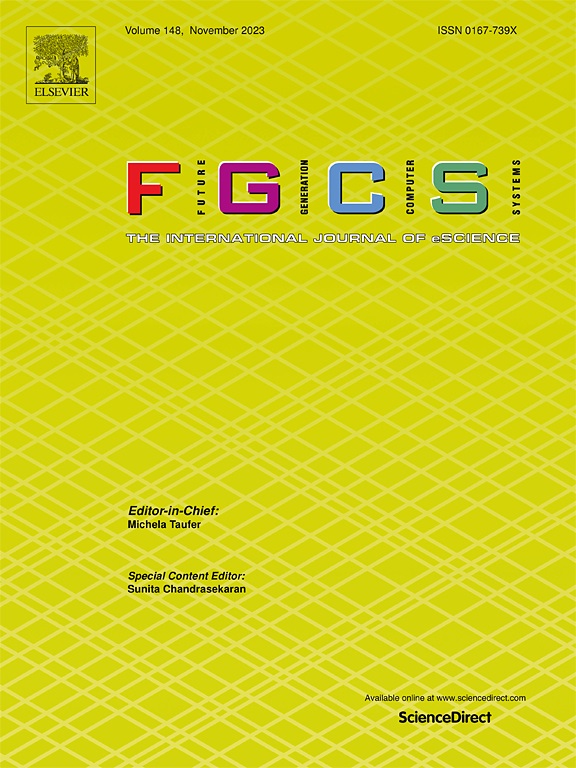RGAnomaly: Data reconstruction-based generative adversarial networks for multivariate time series anomaly detection in the Internet of Things
IF 6.2
2区 计算机科学
Q1 COMPUTER SCIENCE, THEORY & METHODS
Future Generation Computer Systems-The International Journal of Escience
Pub Date : 2025-02-10
DOI:10.1016/j.future.2025.107751
引用次数: 0
Abstract
The Internet of Things encompasses a variety of components, including sensors and controllers, which generate vast amounts of multivariate time series data. Anomaly detection within this data can reveal patterns of behavior that deviate from normal operating states, providing timely alerts to mitigate potential serious issues or losses. The prevailing methodologies for multivariate time series anomaly detection are based on data reconstruction. However, these methodologies face challenges related to insufficient feature extraction and fusion, as well as instability in the reconstruction effectiveness of a single model. In this article, we propose RGAnomaly, a novel data reconstruction-based generative adversarial network model. This model leverages transformers and cross-attention mechanisms to extract and fuse the temporal and metric features of multivariate time series. RGAnomaly constructs a joint generator comprising an autoencoder and a variational autoencoder, which forms the adversarial structure with a discriminator. The anomaly score is derived from the combined data reconstruction loss and discrimination loss, providing a more comprehensive evaluation for anomaly detection. Comparative experiments and ablation studies on four public multivariate time series datasets demonstrate that RGAnomaly delivers superior performance in anomaly detection, effectively identifying anomalies in time series data within IoT environments.
RGAnomaly:基于数据重构的生成对抗网络,用于物联网中多变量时间序列异常检测
物联网包含各种组件,包括传感器和控制器,它们会产生大量的多元时间序列数据。这些数据中的异常检测可以揭示偏离正常操作状态的行为模式,及时提供警报,以减轻潜在的严重问题或损失。当前的多变量时间序列异常检测方法是基于数据重构的。然而,这些方法面临着特征提取和融合不足以及单一模型重建有效性不稳定的挑战。在本文中,我们提出了一种新的基于数据重构的生成对抗网络模型RGAnomaly。该模型利用变形和交叉注意机制来提取和融合多元时间序列的时间和度量特征。RGAnomaly构造了一个由自编码器和变分自编码器组成的联合生成器,该生成器与鉴别器形成对抗结构。异常评分由数据重构损失和判别损失综合得出,为异常检测提供了更全面的评价。在四个公共多元时间序列数据集上的对比实验和烧蚀研究表明,RGAnomaly在异常检测方面具有卓越的性能,可以有效地识别物联网环境下时间序列数据中的异常。
本文章由计算机程序翻译,如有差异,请以英文原文为准。
求助全文
约1分钟内获得全文
求助全文
来源期刊
CiteScore
19.90
自引率
2.70%
发文量
376
审稿时长
10.6 months
期刊介绍:
Computing infrastructures and systems are constantly evolving, resulting in increasingly complex and collaborative scientific applications. To cope with these advancements, there is a growing need for collaborative tools that can effectively map, control, and execute these applications.
Furthermore, with the explosion of Big Data, there is a requirement for innovative methods and infrastructures to collect, analyze, and derive meaningful insights from the vast amount of data generated. This necessitates the integration of computational and storage capabilities, databases, sensors, and human collaboration.
Future Generation Computer Systems aims to pioneer advancements in distributed systems, collaborative environments, high-performance computing, and Big Data analytics. It strives to stay at the forefront of developments in grids, clouds, and the Internet of Things (IoT) to effectively address the challenges posed by these wide-area, fully distributed sensing and computing systems.

 求助内容:
求助内容: 应助结果提醒方式:
应助结果提醒方式:


